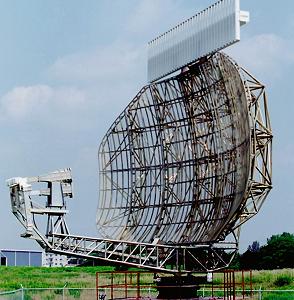ASR-23
Description of the radar set, tactical-technical characteristics

Figure 1: ASR-23
| Specifications | ||
|---|---|---|
| Modification: | 8 Tx-modules | 16 Tx-modules |
| frequency: | 1 250 … 1 350 MHz | |
| pulse repetition time (PRT): | ||
| pulse repetition frequency (PRF): | ||
| pulsewidth (τ): | 1 and 100 μsec | |
| receive time: | ||
| dead time: | ||
| peak power: | 23 kW | 46 kW |
| average power: | ||
| instrumented range: | 80 NM | 180 NM |
| range resolution: | ||
| accuracy: | ||
| beamwidth: | 1.25° | |
| hits per scan: | ||
| antenna rotation: | 12 or 10 rpm | 6 or 5 rpm |
| MTBCF: | 30 000 hr | |
| MTTR: | ||
ASR-23
ASR-23 is a solid-state, L-Band air surveillance radar tailored for the longer range requirements of the en-route air traffic control environment.
Except for the power modules and antenna, it is similar to the ASR-10SS terminal surveillance radar. The radar uses high-power RF transistors in an eight- or 16-module configuration to provide two power and range capabilities.The radar provides:
- Full frequency diversity
- Digital pulse compression
- Dedicated six-level weather mapping
- Open architecture
- Constant False Alarm Rate
- Moving Target Detection with adaptive beam/STC maps
